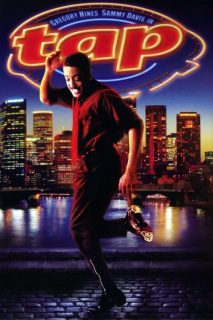
- Year: 1948
- Released: 21 Oct 1948
- Country: United States
- Adwords: N/A
- IMDb: https://www.imdb.com/title/tt0040567/
- Rotten Tomatoes: https://www.rottentomatoes.com/m/man_eater_of_kumaon
- Metacritics:
- Available in: 720p, 1080p,
- Language: English
- MPA Rating: Not Rated
- Genre: Action, Adventure, Drama
- Runtime: 79 min
- Writer: Jim Corbett, Jeanne Bartlett, Lewis Meltzer
- Director: Byron Haskin
- Cast: Sabu, Wendell Corey, Joy Page
- Keywords: hunter, tiger, jungle,
 | 5.9/10 |
Man-Eater of Kumaon Photos



Man-Eater of Kumaon Torrents Download
| 720p | bluray | 730.5 MB | magnet:?xt=urn:btih:2441B6BEB0442E389C4D71C66F8D940713C893A6 | |
| 1080p | bluray | 1.32 GB | magnet:?xt=urn:btih:B1C3F26D426DE891DEE4E45F6B1A98063CCC193E |
Man-Eater of Kumaon Subtitles Download
Man-Eater of Kumaon Movie Reviews
Jim Corbett was right.
I’m not sure why “ceswart” chose the IMDb for his comment but I feel duty bound to point out that it contains three significant errors. First, the Sundarbans, to give the the area its correct spelling, are in Bangladesh, not India. Secondly, the Bangladeshi government maintains foresters who hunt down and kill man-eaters, just like Jim Corbett did for the Indian Forest Service almost a century ago. Third, the total number of humans killed by tigers in all of Bangladesh between 1984 and 2001 was 427, a terrible toll to be sure, but a far cry from 300 a year.
What’s really interesting is that the increased prevalence of man-eaters in the area is caused by the increased salinity of the Bramaputra river water. This, in turn, is caused by development upstream, mostly in India, decreasing to total flow and allowing back wash from the Bay of Bengal. The extra salt damages the tigers’ livers, enervating them to the point that they become man-eaters. Corbett was right!
I don’t mean to be preachy but wouldn’t it be better to restrict this forum to movie talk and put social commentary on more appropriate bulletin boards elsewhere on the net?
Takes itself way too seriously.
In typical Hollywood style this film asserts that everyone in India is terribly spiritual and stiflingly serious. They wander about saying profound things about the meaning of life, while nobly suffering in poverty. Add to this a laughably sententious narration and an American on a spiritual quest (which somehow will be helped by shooting tigers)played without a shred of humour by Wendell Corey, and you have a pretty bad film.
But there is the most wonderful tiger footage that makes sitting through the boring bits worthwhile. Well staged attacks on humans and animals, and a sensational sequence when the tiger fights a crocodile, are very exciting and beautifully photographed. No surprises that director Byron Haskin was one of the top cameramen of the silent era – it is when this film does not talk that it is at its best.
The best version of Frankenstein ever put on film.
Back in the 30’s and 40’s of the last century, Jim Corbett held the place in the popular imagination later taken up by Jacques Cousteau: an adventurer and passionate crusader for conservation. His books were enormous best sellers so it was inevitable that one would be bought for the movies. “The Man Eaters [note the plural] of Kumaon” described every tiger he had seen or heard of who attacked a human being. In every case he found that the beast was sick or wounded and only killed humans because he was unable to hunt wild game. You may think it a lame effort to exonerate dangerous animals but keep an open mind and then try to figure out how to make such a book into a movie. There might be other ways but this one works marvelously.
A man (an American doctor) shoots at a tiger just as night is falling. He knows he has hit but when he reaches the spot where the tiger lurked he finds one severed toe and a trail of blood. Out of cowardice (the sun is setting)or carelessness (what the hell, it’s only a tiger) he abandons the wounded creature to its fate. That’s the first two minutes of the movie, in case you miss it.
From here on, while sticking rigorously to Corbett’s thesis, the movie utterly abandons his narrative and follows almost exactly the storyline of Mary Shelley’s “Frankenstein.” If the movie is not more believable than her book, it is at least easier to understand. The monster has to kill to stay alive and isn’t it right,just, even necessary, that it seek out the man who made it a monster? Especially in light of modern ideas about hunting in general and tigers in particular, this version is a lot easier to swallow than Shelley’s Man vs. God allegory. I’ll go so far as to say that the final scene is so right, so perfectly right, that Shelley would have used it in her book if she had thought of it.



